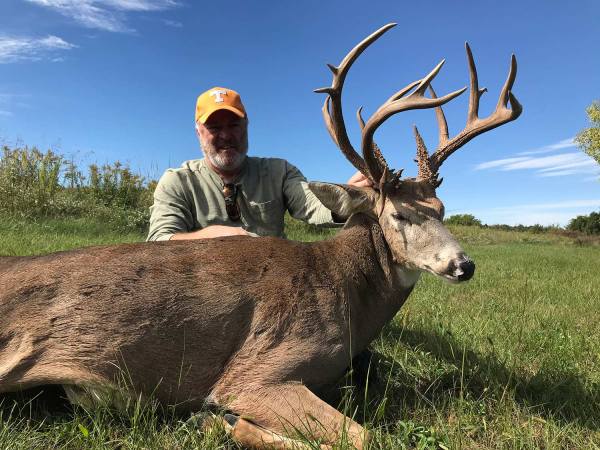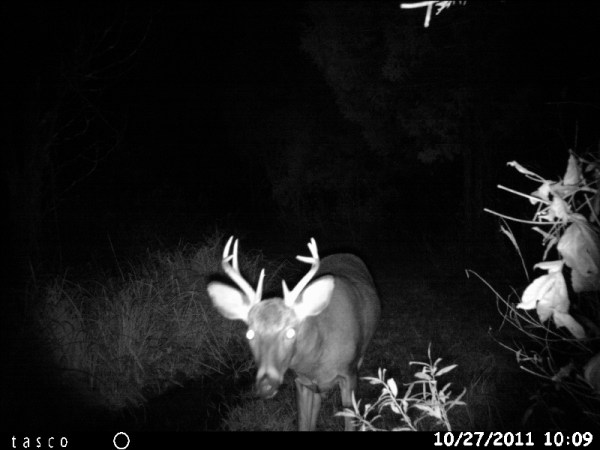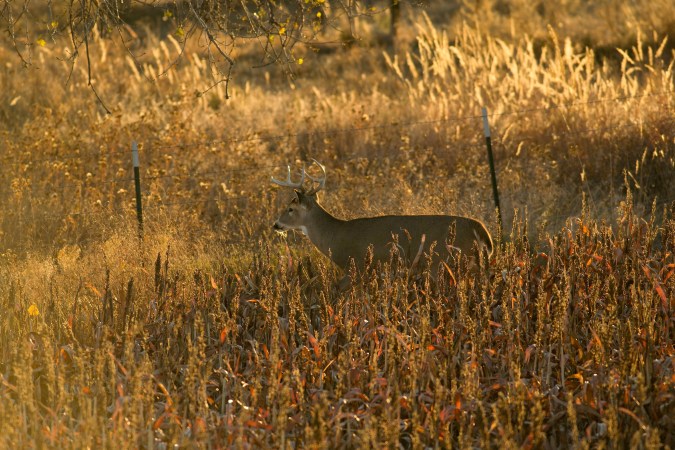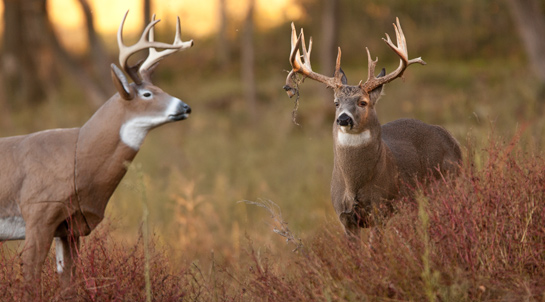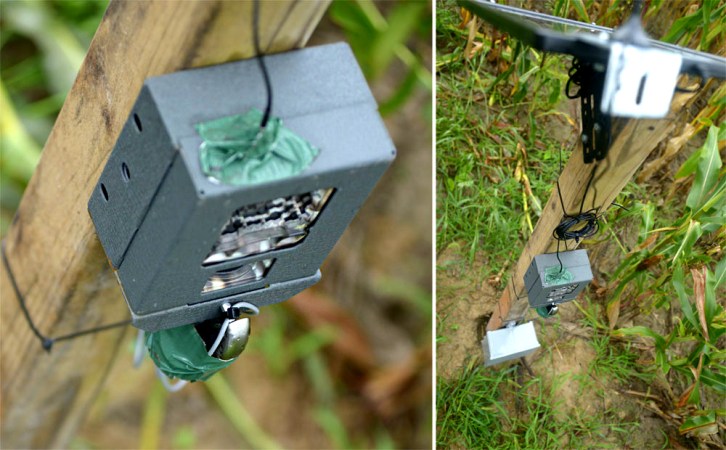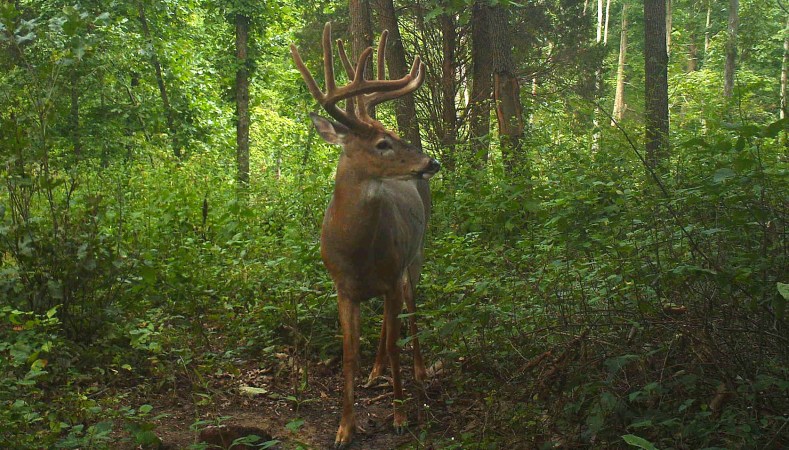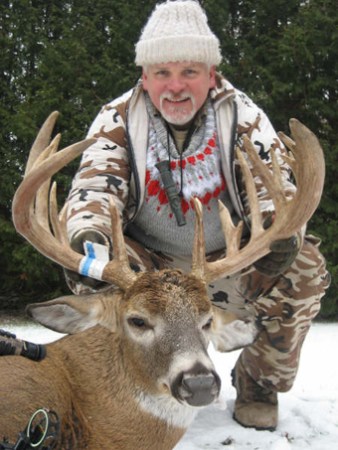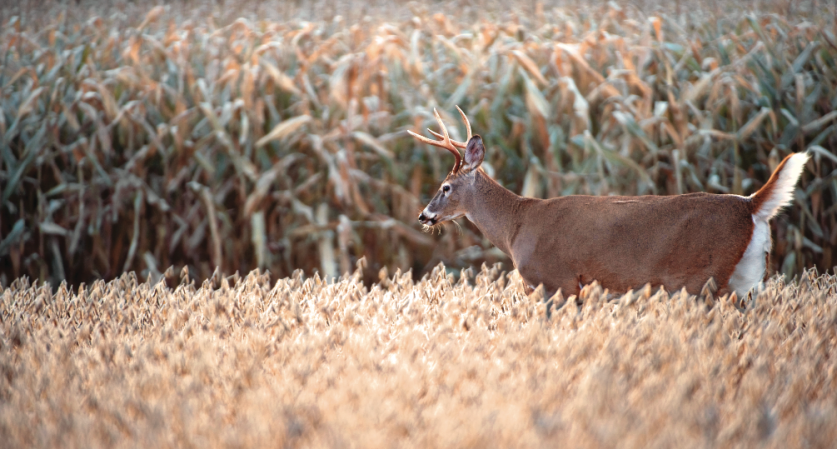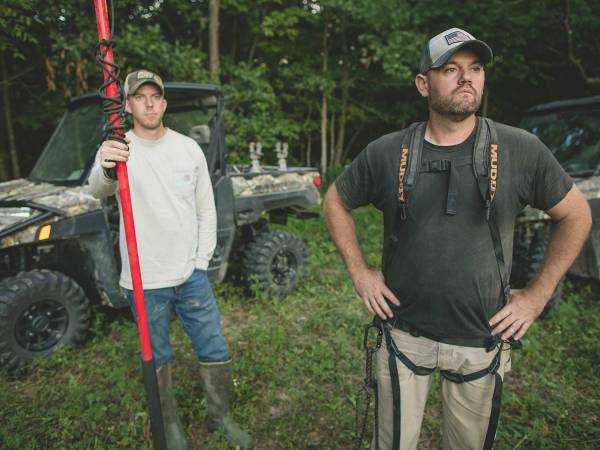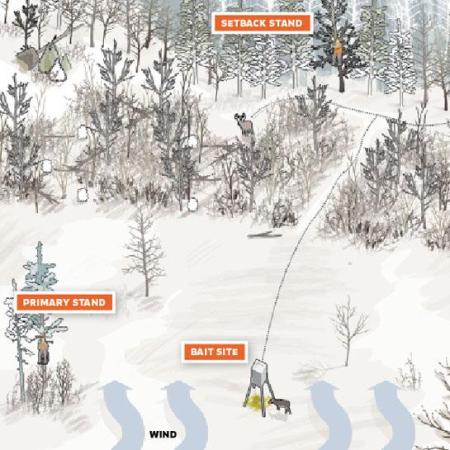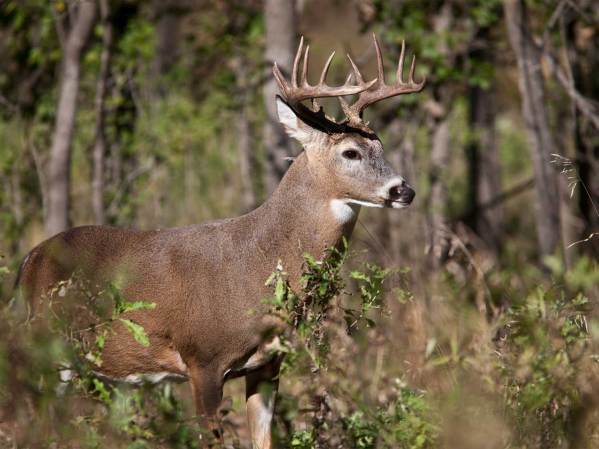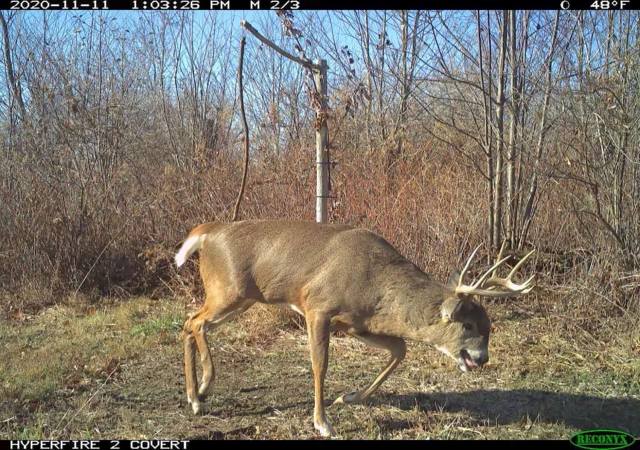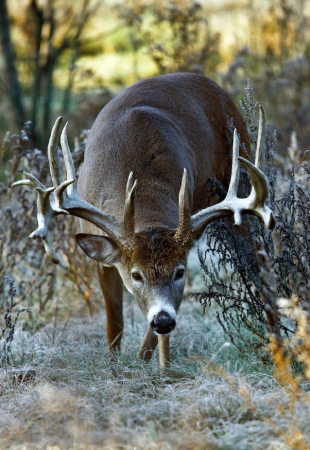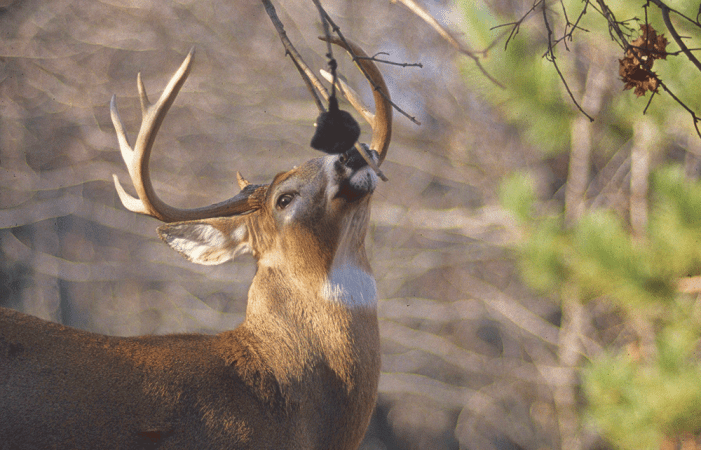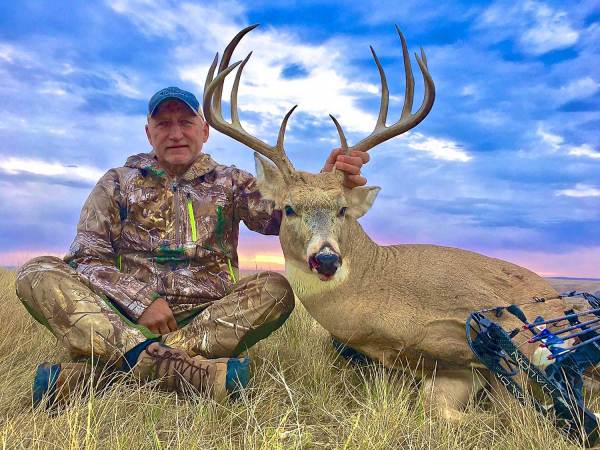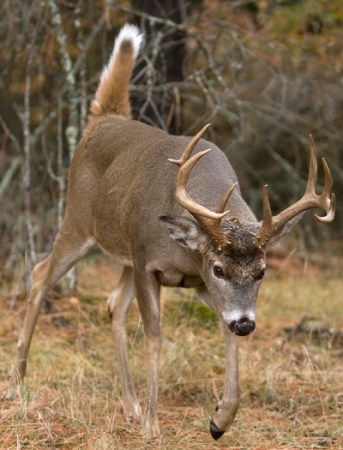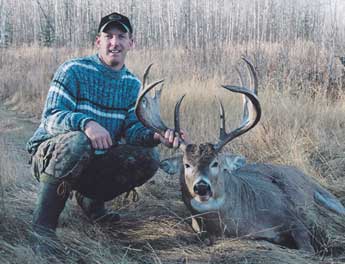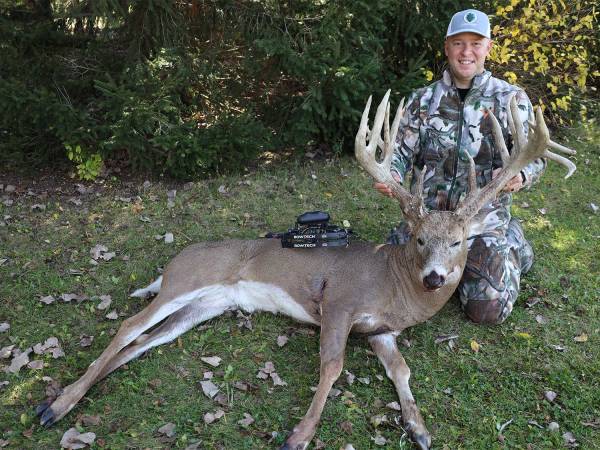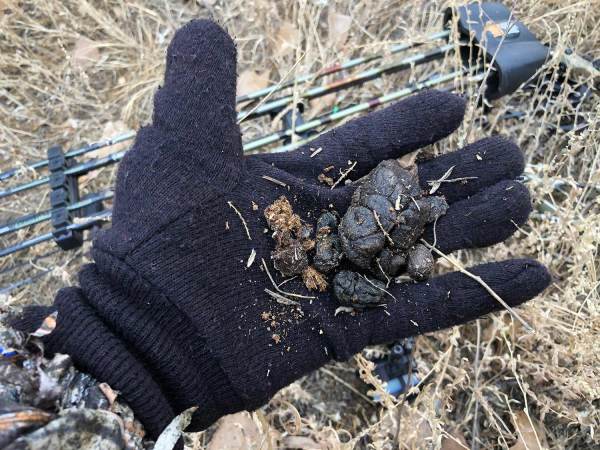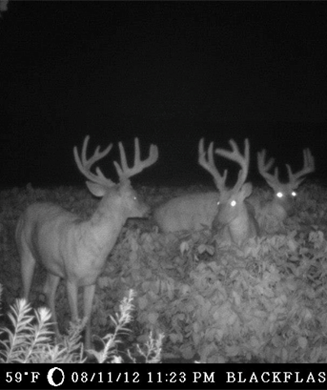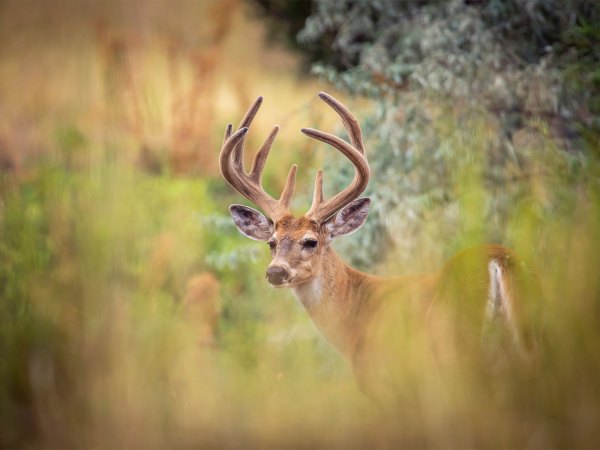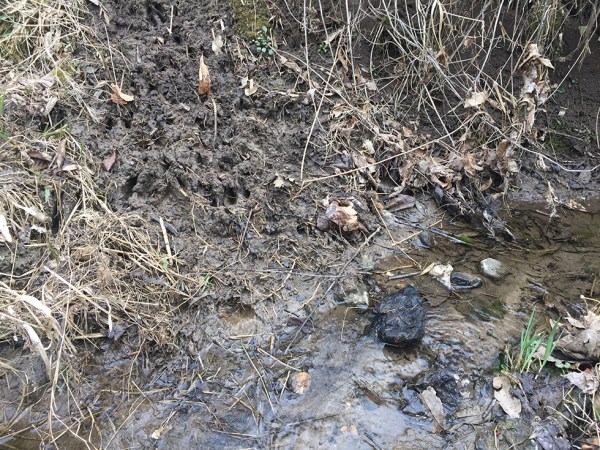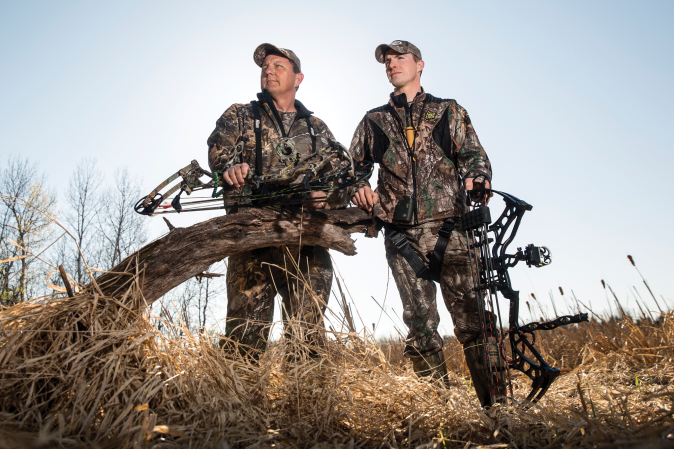The stand was already in a good spot, next to a creek crossing and at the edge of a bottleneck with two nearby deer trails. Then, three weeks before bow season, my son Jerrod and I used weed whips to blaze an access path through the underbrush to the stand. That way we would be able reach it silently and without leaving a scent trail.
Minutes into opening day, Jerrod and I spotted a doe headed toward us. Rather than using a preexisting trail, she was walking down our access path. Only a shift in the wind kept the doe from walking beneath our tree. For the remainder of the season our path was one of the most heavily trod deer trails on the property.
We created a hot new trail unintentionally, but other hunters have done so quite knowingly. Recently, bow-hunters Danny Williams and Brad Geren were faced with the dilemma of getting within bow range of whitetails in a field of tall prairie grasses. With existing trails too far from their tree stands, the innovative pair spent a late summer weekend with weed-eaters, carving paths that passed within 20 yards of the stands. Their videos of trophy bucks walking the man-made trails leave no doubt that whitetail movements can be manipulated.
Of course, it’s always best to disturb your hunting grounds as little as possible, and in most situations you can hunt natural movements and trails. Then again, you can sometimes up your odds by playing on a whitetail’s tendency to take the path of least resistance. In some cases, the lengths hunters have gone to are pretty extreme. One laced his hunting grounds with strips of crime-scene tape to get deer moving in his direction. Another lined big hay bales end to end to cut a 100-yard funnel in half. Most of the time, however, only a few small adjustments are needed to get the bucks coming to you.
For example, you can improve an existing fence crossing by making it even easier for deer to clear the highest strand. With landowners’ permission, some hunters have used steel cables to cinch all of the wires closer together. Others have loosened the top wire’s post connections and pushed the wire down to an easily cleared height. Dropping the top wire just one foot can be appealing to area whitetails. Alternatively, you can help your cause by raising the fence at other popular crossings.
It’s also possible to shy deer movement away from competing trails and onto yours by using natural blockades. Let’s say you find a spot where a creek crossing branches into three trails that lead toward a feed field. A few fallen limbs dragged across the two side trails could urge deer to take the middle course. Make the blockage somewhat wider than the trail to keep whitetails from simply sidestepping the barrier. Those hunting private property should get the okay on any possible brush- cutting from the landowner. Get caught weaving walnut, pecan or other cash-crop saplings into blockades, and you’ll probably end up looking for a new place to hunt.
Many times the job can be done with just a small amount of work. With a little trimming and clearing you may be able to shift whitetail movements 10 yards closer to your tree stand, which will up your odds tremendously. For instance, let’s say you find a heavily used trail with the only decent tree to the south of the trail in an area with predominant south winds. Rather than gamble with the bad wind, or hope you get a rare north wind when you can hunt, try blocking the original trail and creating another that loops by the opposite side of your tree stand before rejoining the traditional trail.
Sometimes changing the trail just a few feet can end up making the difference between an impossible shot and an easy shot. A fallen cedar at the right spot could force a buck through a clear shooting lane rather than a tight screen of vines. Conversely, changing a trail so it passes on the far side of a huge oak could give you the perfect cchance to mount your gun or get to full draw.
Trail manipulation is best done weeks, maybe months, before the season. If you find yourself needing to close a trail or open another between hunts, use as much caution as possible. Always wear knee-high rubber boots and rubber gloves to eliminate human scent. Pick a time of day when deer won’t be using the area and try to keep all noise to a minimum, which means using a handsaw instead of a chain saw. Get in quickly, work quietly, leave everything looking and smelling as natural as possible and you may well bring more deer your way this season.
Creating Trails With Scent
Like a growing number of bowhunters, Terry Rohm gets bucks to follow their noses to his tree stands by using two proven techniques. “A drag rag saturated in scent can be a great tool if you’re walking through good deer country to get to your stand,” says Rohm, a popular whitetail seminar speaker and marketing director for Wellington Outdoors. “If the bucks are moving and come across that line of scent, they’ll usually follow it right to you. Of course it takes some thought, though. You don’t want to have the drag line come in from the downwind side of your stand.”
Rohm is also a big fan of mock scrapes, saying they’re a great way to keep a buck coming into your area day after day, if you’re using the right ingredients. “Now you can use a gel scent, which will last for days, or a drip-applicator, which will keep the scrape smelling fresh for a long time,” says Rohm. “Check the mock scrape to see if there are any big buck tracks around it. If there are, set up and hunt; if not, you’ll know to move on.”


